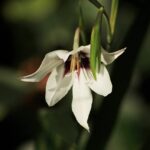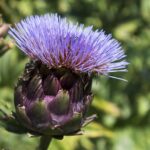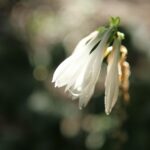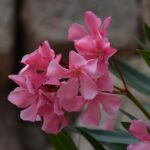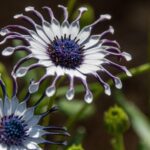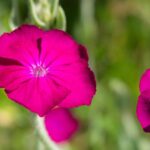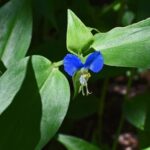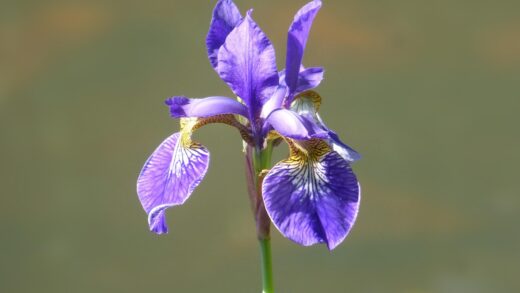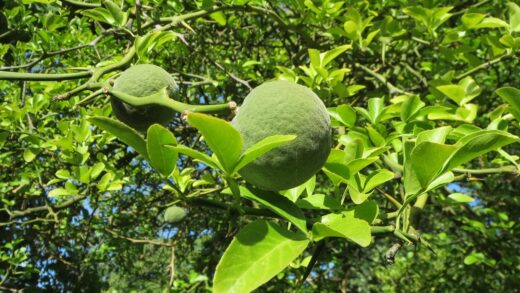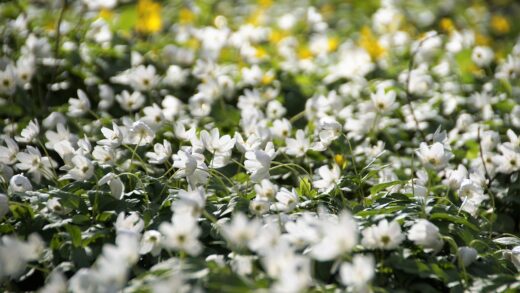Spiraea are widely celebrated in the horticultural world for their general robustness and resistance to many of the common ailments that can plague other garden shrubs. This inherent resilience makes them a reliable choice for creating low-maintenance and beautiful landscapes. However, no plant is entirely immune to challenges from diseases and pests. Under certain environmental conditions or when a plant is under stress, it can become vulnerable to attack. A proactive and observant gardener who understands the potential threats is best equipped to prevent problems before they start or to intervene effectively at the first sign of trouble. This knowledge is crucial for maintaining the long-term health and aesthetic appeal of these valuable shrubs.
The key to managing pests and diseases in spiraea lies in an integrated approach that prioritizes prevention. This means creating a growing environment that naturally promotes plant health and discourages pathogens and pests. Proper plant spacing for good air circulation, correct watering techniques that keep foliage dry, and building healthy, biologically active soil are all foundational practices that form the first line of defense. A healthy, vigorous plant is far less likely to succumb to an attack than one that is stressed by poor cultural conditions.
This article will provide a comprehensive overview of the most common diseases and pests that can affect spiraea. It will detail how to identify specific problems, from the tell-tale white dust of powdery mildew to the sap-sucking damage of aphids. More importantly, it will focus on effective and environmentally responsible management strategies, emphasizing cultural controls and biological solutions over a reliance on chemical treatments. The aim is to equip the gardener with the diagnostic skills and practical knowledge needed to act as a steward of their plants’ health.
By learning to recognize the early signs of distress and understanding the life cycles of common pests and pathogens, a gardener can intervene in a timely and targeted manner. This prevents minor issues from escalating into major infestations or infections that could compromise the plant’s vitality. Ultimately, managing the health of a spiraea is not about creating a sterile, problem-free environment, but about fostering a balanced ecosystem where the plant has the strength to thrive amidst the natural challenges of the garden.
Fungal diseases affecting spiraea
Among the few diseases that trouble spiraea, powdery mildew is by far the most common. This fungal disease is easily identified by the characteristic white or grayish, powdery patches that appear on the surfaces of leaves, stems, and sometimes flower buds. The infection is most likely to occur during periods of warm days and cool, humid nights, conditions that are common in late spring and summer. While it is rarely fatal to the plant, a severe infection can be unsightly, reduce photosynthesis, and cause leaves to yellow, distort, or drop prematurely, weakening the shrub over time.
More articles on this topic
Prevention is the most effective strategy for controlling powdery mildew. The fungus thrives in environments with poor air circulation and damp foliage. Therefore, ensure proper spacing when planting spiraea to allow for adequate airflow around and through the shrub. Pruning to thin out dense, interior branches can also significantly improve circulation. Furthermore, always water the plant at its base using a soaker hose or drip irrigation rather than overhead sprinklers, as this keeps the leaves dry and makes the environment less hospitable for fungal spores to germinate.
If powdery mildew does appear, it can often be managed with simple, non-chemical methods, especially if caught early. Pruning off the most heavily infected leaves or stems can help to reduce the amount of fungal inoculum present. For more widespread infections, horticultural oils and neem oil are effective organic fungicides that work by suffocating the fungal spores. A homemade spray solution of one tablespoon of baking soda and a half teaspoon of liquid soap mixed in a gallon of water can also be an effective preventative or early-stage treatment, as it alters the pH of the leaf surface, making it difficult for the fungus to survive.
In cases of severe or persistent infections, chemical fungicides may be considered, but they should always be a last resort. It is crucial to choose a product specifically labeled for use on flowering shrubs and for the control of powdery mildew. Always read and follow the label instructions for application rates and timing precisely. However, for most garden situations, a focus on improving cultural conditions and using gentle, organic treatments will be sufficient to keep powdery mildew in check and maintain the health of the spiraea.
Common insect pests
Spiraea shrubs are not a primary target for most garden pests, but they can occasionally be bothered by aphids. These are small, pear-shaped, sap-sucking insects that can be green, black, or pink in color. They typically gather in colonies on the tender new growth, flower buds, and the undersides of leaves. Their feeding can cause leaves to curl, yellow, and become distorted. As they feed, aphids also excrete a sticky substance called honeydew, which can lead to the growth of sooty mold and can attract ants, which often farm the aphids for this sweet substance.
More articles on this topic
Managing aphids on spiraea is often straightforward and rarely requires harsh chemicals. For a small infestation, a strong jet of water from a garden hose is often enough to physically dislodge the aphids from the plant. This process may need to be repeated every few days for a week or two to be fully effective. This simple physical control method is highly effective and has no negative impact on beneficial insects or the surrounding environment.
Encouraging natural predators is a cornerstone of a sustainable pest management program. Ladybugs, lacewings, and hoverflies are all voracious predators of aphids. You can attract these beneficial insects to your garden by planting a diversity of flowering plants, particularly those with small flowers like dill, fennel, and alyssum. By creating a welcoming habitat for these predators, you can establish a natural and self-regulating system of aphid control.
If an aphid population becomes particularly large and persistent, insecticidal soap or neem oil sprays can be used. These products work by smothering the soft-bodied insects and must come into direct contact with the pests to be effective. Be sure to thoroughly coat all surfaces of the affected foliage, especially the undersides of leaves where aphids tend to congregate. These options are preferable to broad-spectrum synthetic insecticides, which can harm beneficial insects and disrupt the garden’s natural ecosystem.
Other potential problems
While less common than powdery mildew or aphids, spiraea can occasionally be affected by leaf spot diseases. These are caused by various fungi or bacteria and appear as distinct spots or blotches on the foliage. The spots may be brown, black, or tan, and sometimes have a yellow halo around them. If the infection is severe, the spots can merge, causing the entire leaf to die and fall off. While usually a cosmetic issue, significant defoliation can weaken the plant.
Management for leaf spot diseases primarily revolves around good garden sanitation. The pathogens that cause these diseases often overwinter on fallen leaves and infected twigs. Therefore, it is very important to rake up and dispose of all fallen leaves from around the spiraea in the autumn. Do not add these leaves to a compost pile unless you are certain it will reach high enough temperatures to kill the pathogens. Pruning to improve air circulation can also help the foliage dry more quickly, reducing the chances of infection.
Fire blight is a more serious, though thankfully rare, bacterial disease that can affect plants in the rose family, which includes spiraea. The infection typically enters the plant through flowers or fresh wounds and causes a characteristic scorched or burnt appearance on branches and blossoms. The affected branches will wilt and turn black or brown, and the tips may form a “shepherd’s crook” shape. There is no chemical cure for fire blight, and management relies on promptly pruning out infected branches. It is critical to make the cut at least 12 inches below the visible symptoms into healthy wood and to disinfect the pruning tools between each cut with a 10% bleach solution to avoid spreading the bacteria.
Root rot is another potential problem, but it is almost exclusively a cultural issue rather than a true disease in the traditional sense. It is caused by soil-borne fungi that thrive in anaerobic, waterlogged conditions. The roots of a spiraea sitting in poorly drained soil will begin to decay, losing their ability to absorb water and nutrients. Above ground, the plant will appear to wilt, with yellowing leaves and stunted growth. The only solution is to address the underlying drainage problem. Prevention, through proper site selection and soil amendment before planting, is the only truly effective way to avoid root rot.
Integrated pest management principles
The most effective and environmentally sound approach to dealing with pests and diseases on spiraea is through a strategy known as Integrated Pest Management (IPM). IPM is a holistic approach that does not seek to eradicate pests entirely but to manage them at a level where they do not cause significant damage. It combines several different tactics, starting with the least invasive and only resorting to chemical controls when absolutely necessary. The foundation of any good IPM program is prevention through strong cultural practices.
The first step in IPM is proper identification. It is crucial to accurately identify the pest or disease you are dealing with before taking any action. What might look like a fungal disease could be a symptom of a nutrient deficiency, and a beneficial insect could be mistaken for a pest. Correct identification ensures that any control measures taken are appropriate and effective. This requires careful observation of the plant and sometimes the use of reference guides or local extension services.
Once a problem is identified, IPM prioritizes cultural and mechanical controls. This includes practices already discussed, such as choosing resistant cultivars, improving air circulation through pruning, practicing good sanitation by removing fallen leaves, and physically removing pests with a jet of water. These actions address the root cause of the problem by altering the environment to make it less favorable for the pest or pathogen. They are proactive, preventative, and have minimal negative impact.
Biological controls are the next level of intervention in an IPM strategy. This involves leveraging the natural enemies of pests, such as encouraging predatory insects like ladybugs to control aphids. By fostering biodiversity in the garden, you can create a resilient ecosystem where pest populations are naturally kept in check. Only after all these other options have been exhausted should chemical controls be considered. When they are used, the most targeted and least toxic option (like horticultural oil or insecticidal soap) should be chosen over broad-spectrum pesticides to minimize harm to non-target organisms.
Creating a resilient garden environment
Ultimately, the best defense against pests and diseases is a healthy, resilient spiraea growing in a supportive garden environment. Plant stress is a primary invitation for problems to take hold. Stress can be caused by a multitude of factors, including drought, overwatering, soil compaction, nutrient imbalances, or planting in an unsuitable location. By addressing these fundamental cultural needs, you build a plant’s natural defenses, making it far less susceptible to attack in the first place.
Building healthy soil is the cornerstone of a resilient garden. Soil that is rich in organic matter and teeming with beneficial microbial life provides a steady supply of nutrients, retains moisture effectively, and can even help to suppress soil-borne pathogens. Amending the soil with compost annually, using organic mulches, and avoiding soil compaction are key practices that foster this living soil ecosystem. Healthy soil grows healthy plants, which is the most fundamental principle of organic gardening.
Biodiversity is another critical component of a resilient garden. A monoculture, where large areas are planted with a single type of plant, can be a banquet for pests and diseases specific to that plant. By planting a wide variety of different plants, including flowers, herbs, shrubs, and trees, you create a more complex and stable ecosystem. This diversity provides habitats and food sources for a wide range of beneficial insects, birds, and other organisms that can help to control pest populations naturally.
Regular monitoring is the final piece of the puzzle. Spending time in the garden and observing your plants closely allows you to spot potential issues at their very earliest stages. Catching a small patch of powdery mildew or the first few aphids allows for immediate and simple intervention before the problem has a chance to escalate. This attentive and proactive approach, combined with strong cultural practices, will ensure that your spiraea remains a healthy and beautiful component of your garden for many years.







